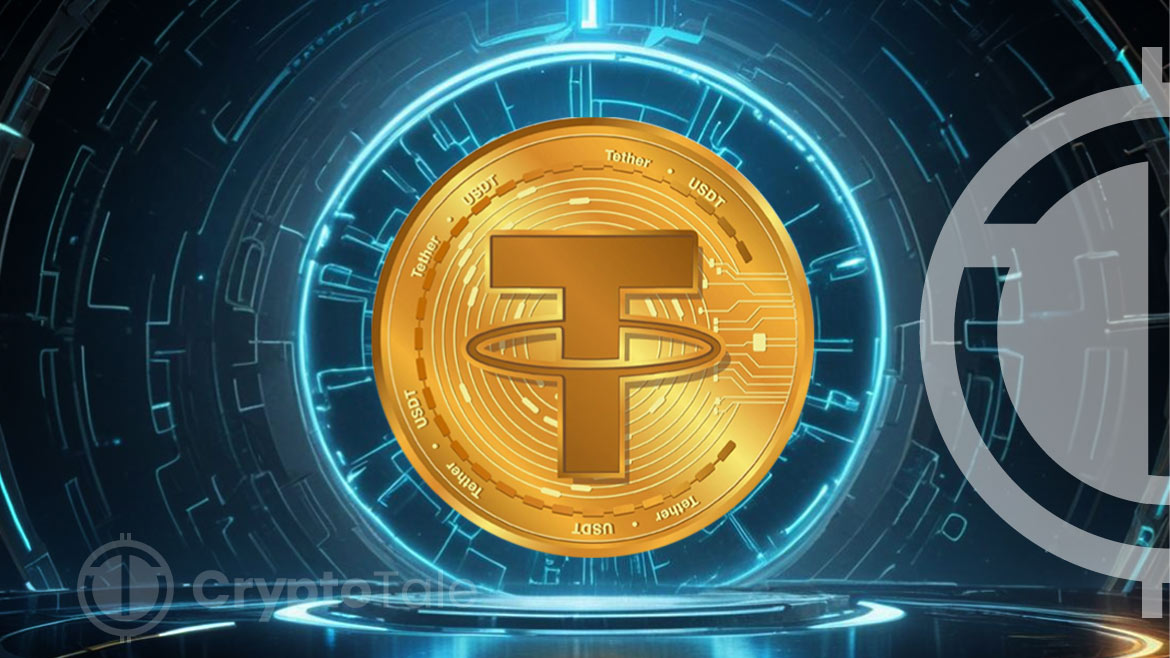
In an environment where volatility is the norm, Tether stands out as a lighthouse for traders looking for stability. Tether (USDT), as one of the earliest stablecoins, bridges the gap between the gap between fiat currencies and digital currencies. This article will give you a detailed description of the Tether blockchain.
What is Tether?
Tether is a famous cryptocurrency known for being one of the earliest stablecoins. In terms of market cap, it stands in third place, just behind Bitcoin and Ethereum. The ticker name of Tether is USDT and is pegged to the US dollar to maintain a stable price in the volatile crypto market. In addition to the dollar, USDT is also pegged with other fiat currencies like the Euro (EURT), Mexican Peso (MXNT), and Chinese renminbi (CNHT).
Tether aims to maintain a 1:1 ratio with US dollars, meaning that 1 USDT is worth 1 US dollar. To achieve price stability, it holds a large reserve of various assets. According to the latest Reserves Report by Tether, it holds
- 84.05% of Cash & Cash Equivalents and other Short-term Deposits
- 4.87% of Bitcoins
- 4.29% of Secured Loans, 3.25% of Other Investments
- 3.31% of Precious Metals
- 0.02% of Corporate Bonds
Furthermore, its total liabilities amount to $104,027,539,692, with a net equity of $6,261,866,717.
Tether Faces Decline Amidst Rising Stablecoin Competition and Regulatory ChangesHistory of Tether
The idea behind Tether came from J.R. Willet, who in 2012 wanted to develop a cryptocurrency based on the Bitcoin blockchain. This led to the development of Mastercoin, which was then rebranded into Omni. Later, in 2014, based on Mastercoin, Brock Pierce, Reeve Collins, and Craig Sellars created Realcoin. In October 2014, the first tokens were issued using the Omni protocol, and in November, it rebranded as Tether.
On January 6, 2015, Tether’s public beta was launched, allowing users to deposit, withdraw, and transfer USDT. Later in the same year, it was bought by a major crypto exchange, Bitfinex. Furthermore, with its rapid growth and usage, it quickly expanded into other blockchain platforms. In Ethereum, Tether was issued as an ERC-20 token, which allowed it to be used in Ethereum-based applications and DeFi protocols. In TRON, it was issued as a TRC-20 token to provide lower fees and faster transaction times.
However, its rapid growth has led to people question about its reserves and transparency and regulators started to invetigate. In 2018, both Tether and Bitfinex were subpoenaed by the U.S. Commodity Futures Trading Commission (CFTC) because of concerns about market manipulation and reserve banking. Later in 2019, Tether released a report detailing its reserves in an effort to show transparency but was criticized for its lack of details. After years of back and forth, in February 2021, Tether and Bitfinex reached a settlement with the New York Attorney General (NYAG) and agreed to pay a fine of $18.5 million and provide regular transparency reports.
How Does Tether Work?
Tether (USDT) is pegged to fiat currencies on a 1 to 1 basis and offers the stability. When traders want to acquire a USDT coin, they can directly purchase the coin by depositing an equivalent amount of fiat currency into Tether Limited. Once the amount is deposited, Tether will send an equivalent amount of tokens to the trader’s address.
On the other hand, when a trader wants to redeem USDT for fiat currencies, they need to return the USDT tokens to Tether Limited. Tether will release the corresponding amount of fiat currencies from its reserves to your wallet to redeem the USDT.
These tokens can be transferred, stored for later use, or traded for other purposes. However, a fee will be charged whenever you exchange fiat currencies for USDT or USDT for fiat currencies.
Use Cases of Tether
Trading
The main use case of Tether is facilitating cryptocurrency trading. Before the launch of stablecoins like Tether, there were only crypto-to-crypto trading pairs and no fiat-to-crypto pairs. Because that would defeat the whole concept of decentralization. All this changed with the introduction of Tether because integrating USDT into trading pairs allowed traders to move in and out of different cryptocurrencies without changing back to fiat currencies. This preserved the decentralized nature of blockchains while ensuring liquidity.
Tether’s USDT Now Accepted for Philippine SSS ContributionsHedging
When the market is experiencing high volatility, traders can convert their cryptocurrencies into Tether to avoid market fluctuations. Tether acts as an excellent store of value and allows traders to minimize their losses during times of volatility.
Transfer of Funds
Tether offers a significant advantage in trading as it has all the advantages of cryptocurrencies and other benefits that crypto doesn’t have. It is much cheaper and faster to transfer funds in USDT than fiat currencies, especially for international transfers and remittances.
Payments
Tether can be used to settle transactions quickly and efficiently, both online and in person. Although it does not suffer from volatility risks, it is not widespread as a payment method among consumers. For merchants, making payments in Tether offers more flexibility than fiat currencies.
Conclusion
Tether has become a major part of the crypto ecosystem, offering stability through its 1:1 peg with fiat currencies like the US dollar. Its integration with various currencies has revolutionized trading, enabling seamless transitions between volatile cryptocurrencies and stable assets. Despite facing various legal scrutiny and challenges, Tether still remains a preferred choice for traders and businesses alike.














